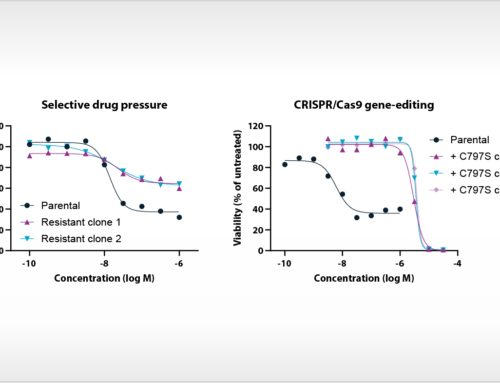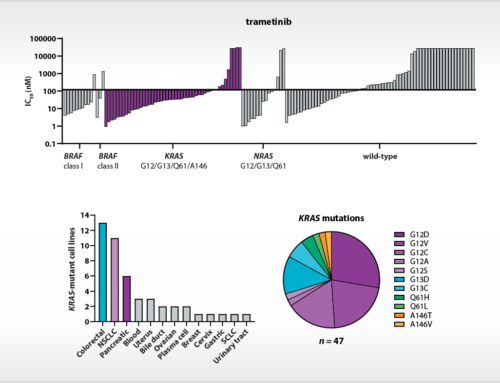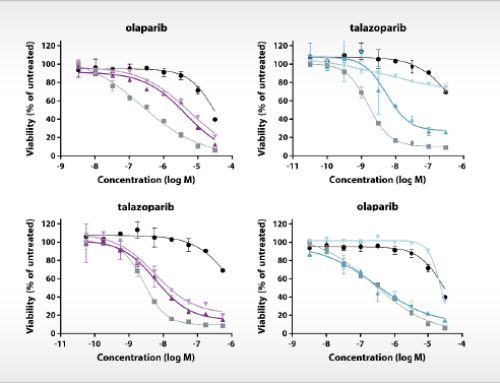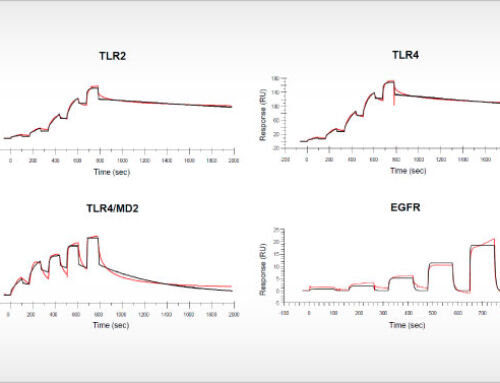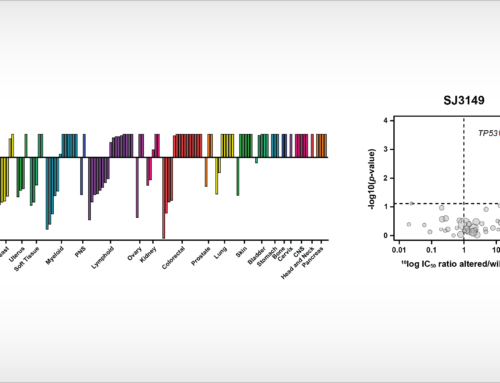
Expression of tumor cell markers and PD-L1 on primary material of ovarian cancer patients by flow cytometry. Grey peaks represent the staining with isotype control antibodies.
Approaches for Predictive Precision Medicine at AACR-NCI-EORTC conference
Oss, October, 18, 2019 – NTRC will present three scientific posters at the AACR-NCI-EORTC Molecular Targets and Cancer Therapeutics conference in Boston (USA), October 26-30. Two of the posters concern predictive approaches for targeted therapies; one is on in vitro screening of primary material and relating this to clinical outcome; the other on computational approaches for combination screening. The third poster is on a small molecule approach for cancer immunotherapy.
Poster #1. A precision medicine platform to predict the clinical response to chemo- and immunotherapy for epithelial ovarian cancer
Epithelial ovarian cancer (EOC) is the most lethal gynaecologic malignancy. First-line therapy in advanced EOC is surgery in combination with platinum-based chemotherapy and paclitaxel. 15-20% of patients do not respond to this therapy, and in 80% of advanced cases, the disease recurs within three years. Clinical trials with immunotherapies, such as PD-1/PD-L1 blockade, have so far not been successful. There is a need for more diagnostic assays to predict the clinical response to chemo- and immunotherapies. The poster presents a biomarker discovery platform using ascites of ovarian cancer patients. Sunday October 27, pm. Abstract no. A044
Poster #2: Computational models of synergy contribute to efficient combination screening
Combination of anticancer drugs is essential to improve response rates and prevent the emergence of drug resistance. It has been reported that the efficiency of combination screening can be improved by incorporating knowledge of a compound’s biological mechanism. The poster presents three models to predict synergy based on the profiling of single agents in a cancer cell line panel. The model predictions for the PARP inhibitor niraparib are compared to the outcome of a large and unbiased combination screen. Sunday October 27, pm. Abstract no. A141
Poster #3: Side-by-side comparison of small molecule IDO1 inhibitors in biochemical and cell-based assays and development of a IDO1-expressing mouse model to evaluate target modulation
Indoleamine 2,3-dioxygenase (IDO1) is an important drug target for cancer immunotherapy and is associated with resistance to PD-L1-targeted therapies. IDO1 converts L-tryptophan into N-formylkynurenine (NFK). Depletion of L-tryptophan levels induces immune tolerance by suppression of effector T-cells and natural killer cells, and activation of regulatory immune cells. The poster provides a side-by-side comparison of the clinical IDO1 inhibitors epacadostat (INCB024360) and linrodostat (BMS-986205), and describes the development and validation with two IDO1 inhibitors of mouse model to evaluate target modulation. Monday October 28, pm. Abstract no. B060
Learn more about NTRC Precision Medicine Services at booth #1713 in the Exhibition Hall.
NTRC is a precision medicine company dedicated to discovering new anti cancer drug candidates. It is our mission to help you finding a mechanistic hypothesis before entering the clinic. We provide cell-based profiling services, target residence time measurements and biochemical profiling. We can study a wide range of cancer cells, primary patient material and immune cells in vitro, in isolation and in coculture, after exposure to monotherapy and combination therapy. Keywords are: Quality. Flexibility. Short Turnaround Time.


